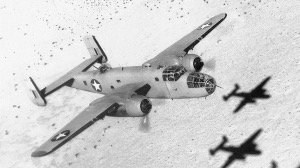Scroll of Honor – Lewis Bryson Lawter
Fatal Formation
Written by: Kelly Durham
There was a threat of war in Europe in the fall of 1938 as Lewis Bryson Lawter and the  Class of 1942 enrolled on the Clemson College campus. Hitler was pressing for control of the Sudetenland, the eastern portion of Czechoslovakia inhabited largely by ethnic Germans. When British and French leaders appeased the German dictator by giving in to his demands—without the consent of their Czech ally—war was avoided. The danger must have seemed remote to Lawter and his classmates, but it would soon ensnare most of them in ways they could hardly imagine.
Class of 1942 enrolled on the Clemson College campus. Hitler was pressing for control of the Sudetenland, the eastern portion of Czechoslovakia inhabited largely by ethnic Germans. When British and French leaders appeased the German dictator by giving in to his demands—without the consent of their Czech ally—war was avoided. The danger must have seemed remote to Lawter and his classmates, but it would soon ensnare most of them in ways they could hardly imagine.
Lawter, an English major from Spartanburg, remained at Clemson for only his freshman year. Instead of returning to school, he took a job with a sheet metal business. The war that had only threatened in 1938 erupted in 1939 and by the end of 1941 had embroiled most of the globe. Lawter enlisted in the Army Air Force one month after the Japanese attack on Pearl Harbor. Lawter showed aptitude and was accepted into navigator training. He was commissioned and awarded his navigator’s wings at Turner Field in Albany, Georgia on September 2, 1942. Two days later, back in Spartanburg, Lawter married Sarah Frances Kinsland.
Lawter and his crew were assigned to the 489th Bomb Squadron of the 340th Bomb Group, since March 1943 operating from Sfax, Tunisia. The 489th flew B-25 Mitchell medium bombers on missions in support of Allied forces squeezing the remaining German and Italian defenders of North Africa between Montgomery’s Eighth Army in the east and Eisenhower’s  Anglo-American forces closing in from the west.
Anglo-American forces closing in from the west.
Lawter, flying as the navigator on Major Cyrus Whittington’s crew, had completed three combat missions when, on Easter Sunday, April 25, 1943, the crew was alerted for its next mission. Flying in “Little Joe,” Whittington led his tight formation of bombers off the runway and into the sky. Suddenly, the next aircraft in the formation flew upward and into the tail of “Little Joe,” wrecking it and sending both aircraft plummeting to the ground where the impact caused their bomb loads to explode. All eleven crew members on the two airplanes were killed in the disaster, the 489th Squadron’s first combat deaths.
Lawter’s remains were recovered and buried with full military honors in a British  cemetery in the Tunisian desert. After the war, Lawter’s body was returned to Spartanburg and interred in Greenlawn Memorial Gardens. Lawter was survived by his wife, his parents, and a sister.
cemetery in the Tunisian desert. After the war, Lawter’s body was returned to Spartanburg and interred in Greenlawn Memorial Gardens. Lawter was survived by his wife, his parents, and a sister.
For more information on Lieutenant Lewis Bryson Lawter, see:
https://soh.alumni.clemson.edu/scroll/lewis-bryson-lawter/
For additional information about Clemson University’s Scroll of Honor visit:
https://soh.alumni.clemson.edu
